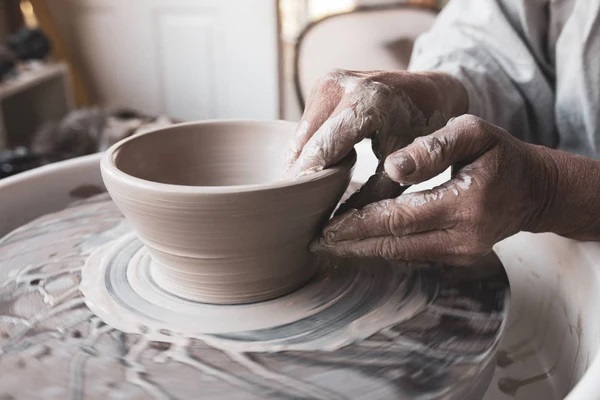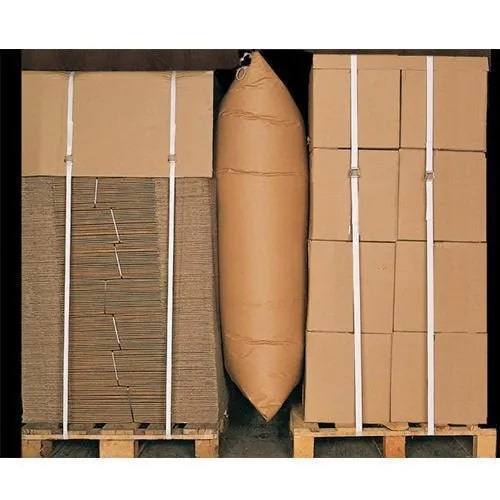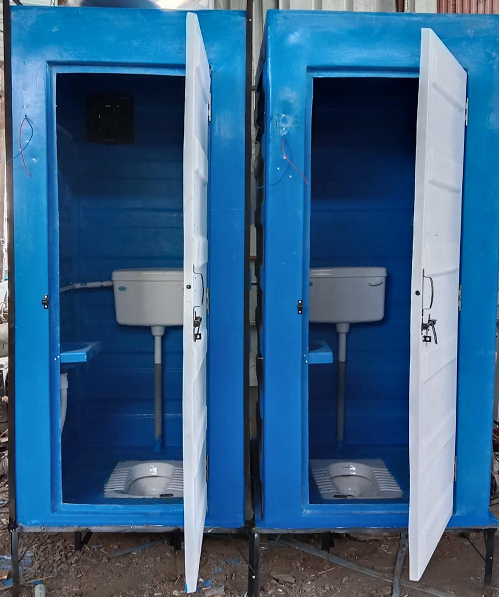Pottery is a representation of the creativity of humans and skill in the realm of imagination and artistic endeavour. Through a variety of techniques, each with its distinct beauty, pottery has progressed from prehistoric cultures to contemporary workshops.
Continue reading to know more about the plethora of pottery techniques used to form clay into ceramic pottery vessels that are both beautiful and useful.
Throwing
The basic structure of the pot is formed on the wheel by rotating or throwing a mound of soft, fresh clay. To create the shape, the potter use both his hands and several types of tools. The resultant pot, known as greenware, is taken off the wheel and allowed to gently dry.
The spinning of the wheel produces centrifugal force, which helps to produce symmetrical shapes in everything from bowls and plates to vases and cups. The technique of wheel throwing requires consistency and persistence.
(Round objects like bowls or vases are created using the potter’s wheel. Teracotta clay slabs and coils can be used to manually create other shapes.)
Trimming
The greenware is put back on the wheel and cut to its final shape by using different kinds of tools to manipulate the motion of the pot when it is dried out and sufficiently rigid to handle (leather hard). It is then set aside for additional drying after cutting.
Some of the steps and patterns mentioned in this technique may seem a bit difficult, but they will become evident throughout the actual ceramic-making process. Although you may study ceramics theory online, it is challenging to completely comprehend the methods used in this method without adopting a more realistic strategy.
These theoretical methods will frequently become clear while you are dealing with clay. Afterwards, you might use more sophisticated methods to enhance your pottery skills.
Sgraffito or Slip Carving
Sgraffito is essentially the technique for cutting through a surface that has been coated with slip. Typically, this step begins by spreading a coating of a contrasting colour slip over a layer of leather-hard clay. It is then laid aside to become leather-hard by stiffening up. You can frequently let the piece solidify for days if you wrap it with plastic wrap.
A picture or motif can be etched through the slip and into the body of clay under the surface after the object is hard enough and the surface is not sticky. The clay and slip contrast well once the artwork has been removed by incising. After firing and glazing, this difference is more pronounced.
Bisque Firing
The trimmed pots are fired in a gas or electric kiln for bisque when they are completely bone dry. This initial fire will occur at a temperature between 1800 and 2300 degrees Fahrenheit, depending on the type of clay utilised. It can take the kiln a day or longer to cool.
After this initial fire, the pots, which are now known as bisque ware, are sturdy and hard. Keep in mind that the pot may shrink by up to 15% throughout the fire process. The potter should make advance plans!
Potters use cones made from different types of clay to measure the temperature inside the kiln. The cone will soften and bend over at an appropriate temperature, based on the kind of clay, signifying to the potter that the kiln has achieved the necessary heat. (Peepholes on the kiln’s side allow for the observation of the cones).
Glazing
Bisqueware may be painted or given a glaze coat. The pots can also be decorated with stains and unique colouring agents referred to as ceramics and underglazes. Normal paints cannot be used to glaze pottery because the high temperatures of the glaze fire destroy the pigments.
Today, it is known that some of the greatest substances for producing brilliant, bright colours (like lead) are toxic. For glazing studio pottery vessels and dinnerware, potters today use chemicals that are proven to be safe and lead-free.
Glaze Firing
The glaze’s chemical composition creates an extremely hard, easy-to-use, and often impermeable surface during the final fire. In the final fire, the pottery itself experiences further changes that make it more powerful, more durable and less porous. The temperature of a glaze firing can reach as high as 2400 degrees Fahrenheit.
Raku
Bisqueware is coated with glaze and heated in a kiln to around 1800 degrees Fahrenheit. After firing, the item is removed and put in a sealed container with flammable materials to eliminate the oxygen. Depending on the glazes employed, raku works may have intricately cracked surfaces or metallic lustres and sheens. Unglazed portions get dark after absorbing carbon from burning.
Keep in mind that raku studio pottery is only aesthetically pleasing and should not be used to store food or drinks.
In conclusion, the tactile properties of clay and the artist’s creativity are combined in pottery, a form of art that combines tradition and innovation. Each pottery-making process, whether it is throwing, or any other technique. It tells a tale of artistry and workmanship. Each piece of pottery is an expression of the artist’s talent and love as you awe at its delicate shapes and rich patterns.






